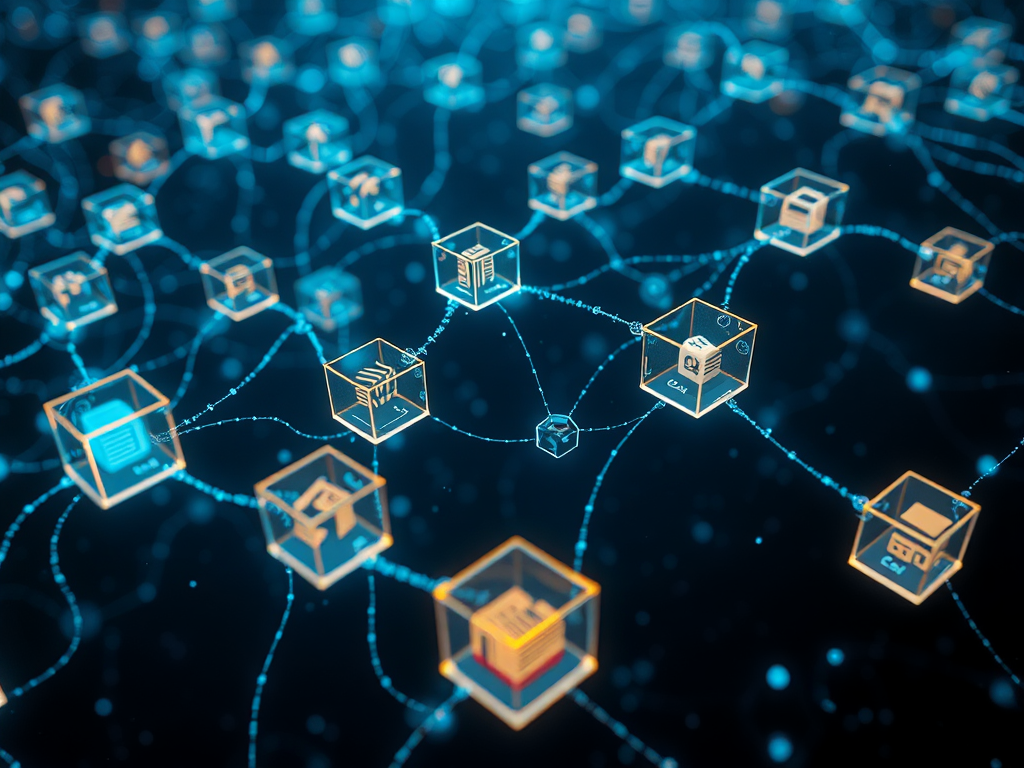Hello, Python programming enthusiasts! Today, let's talk about a hot topic - Python microservices architecture. As a Python blogger who loves to share, I hope to use plain language to take you deep into this complex and fascinating topic. Ready? Let's begin this wonderful journey!
Origin
Do you remember how you felt when you first heard the term "microservices"? Did it seem impressive yet a bit confusing? Don't worry, I was also puzzled when I first encountered this concept. But with deeper learning and practice, I gradually understood the essence of microservices architecture and fell in love with this design philosophy.
So, what are microservices? Simply put, microservices break down a large application into multiple small, independent services. Each service focuses on completing a specific task, like skilled specialists. These specialists collaborate over the network to accomplish complex tasks. Sounds interesting, right?
Decryption
Let's further decode the mystery of microservices. Imagine you're developing an online shopping platform. In a traditional monolithic application, all functions (such as user management, product management, order processing, payment systems, etc.) are concentrated in one large application. In microservices architecture, we break these functions into independent services:
- User Service: Responsible for user registration, login, and personal information management.
- Product Service: Handles product information and inventory management.
- Order Service: Manages order creation, modification, and queries.
- Payment Service: Processes payment-related operations.
Each service is an independent Python application that can use different frameworks and databases. They communicate and work together through APIs. What are the benefits of this design? Let's explore together.
Advantages
Microservices architecture brings many exciting advantages:
-
Flexibility: Each service can be developed, deployed, and scaled independently. Imagine if your product service needs to handle a large number of requests, you can add server resources for it without affecting other services. This flexibility makes the system easier to adapt to changes and pressures.
-
Technical Diversity: Different services can use different tech stacks. For example, you can use Flask to develop the user service, Django for the order service, and FastAPI for the payment service. This allows you to choose the most suitable tools for each service, making full use of the Python ecosystem.
-
Team Collaboration: Microservices architecture is very suitable for large team collaboration. Each group can be responsible for one or more services, developing and maintaining them independently. This greatly improves development efficiency and reduces dependencies and conflicts between teams.
-
Fault Isolation: In microservices architecture, the failure of one service doesn't directly affect others. For instance, even if the payment service temporarily fails, users can still browse products and add to their cart. This isolation greatly enhances system reliability.
-
Continuous Deployment: Since services are independent, you can deploy more frequently and safely. Imagine updating the product service multiple times a day without affecting other functions. This agility allows your system to respond quickly to market demands.
Sounds great, right? But, like everything, microservices architecture also has its challenges. Let's see what challenges it might bring.
Challenges
-
Increased Complexity: Although individual services become simpler, the overall system complexity increases. Issues like service communication, data consistency, and distributed transactions need careful consideration and handling.
-
Operational Pressure: Managing multiple independent services is much more complex than managing a monolithic application. You need to handle multiple databases, deployment processes, and monitor the health of several services.
-
Network Latency: Service communication relies on the network, which may increase the overall system response time. You need to consider the impact of network latency in your design.
-
Data Consistency: In microservices architecture, data is distributed across multiple services. Ensuring data consistency is a challenge. For example, how do you keep order and inventory services in sync?
-
Increased Testing Difficulty: End-to-end testing becomes more complex in a microservices environment. You need to simulate the interaction of multiple services, increasing the complexity and difficulty of testing.
By now, you might wonder: with so many challenges, is adopting microservices really worth it? Don't rush; let's continue exploring how to implement microservices in Python and tackle these challenges.
Practice
Alright, we've covered the theory. Now, let's practice and see how to build a simple microservice with Python. We'll use the Flask framework to create a user service.
First, let's create a new Python file named user_service.py:
from flask import Flask, jsonify, request
from flask_sqlalchemy import SQLAlchemy
app = Flask(__name__)
app.config['SQLALCHEMY_DATABASE_URI'] = 'sqlite:///users.db'
db = SQLAlchemy(app)
class User(db.Model):
id = db.Column(db.Integer, primary_key=True)
username = db.Column(db.String(80), unique=True, nullable=False)
email = db.Column(db.String(120), unique=True, nullable=False)
def __repr__(self):
return f'<User {self.username}>'
@app.route('/users', methods=['POST'])
def create_user():
data = request.get_json()
new_user = User(username=data['username'], email=data['email'])
db.session.add(new_user)
db.session.commit()
return jsonify({'message': 'User created successfully'}), 201
@app.route('/users/<int:user_id>', methods=['GET'])
def get_user(user_id):
user = User.query.get_or_404(user_id)
return jsonify({'id': user.id, 'username': user.username, 'email': user.email})
if __name__ == '__main__':
db.create_all()
app.run(debug=True)
What does this code do? Let me explain:
- We created a Flask application and an SQLite database.
- Defined a User model with id, username, and email fields.
- Implemented two API endpoints:
- POST /users: Create a new user
- GET /users/
: Get user information by ID
This is a basic user service! It can run independently, handling user-related requests.
However, a single service doesn't make up a microservices architecture. Let's create an order service to see how they work together.
Create a new file order_service.py:
from flask import Flask, jsonify, request
import requests
app = Flask(__name__)
orders = {}
@app.route('/orders', methods=['POST'])
def create_order():
data = request.get_json()
user_id = data['user_id']
# Check if user exists
user_response = requests.get(f'http://localhost:5000/users/{user_id}')
if user_response.status_code != 200:
return jsonify({'error': 'User not found'}), 404
order_id = len(orders) + 1
orders[order_id] = {'user_id': user_id, 'items': data['items']}
return jsonify({'order_id': order_id, 'message': 'Order created successfully'}), 201
@app.route('/orders/<int:order_id>', methods=['GET'])
def get_order(order_id):
order = orders.get(order_id)
if not order:
return jsonify({'error': 'Order not found'}), 404
return jsonify(order)
if __name__ == '__main__':
app.run(port=5001, debug=True)
What does this order service do?
- It provides APIs for creating orders and retrieving order information.
- When creating an order, it checks if the user exists by calling the user service's API.
Now, we have two collaborating microservices! The user service runs on port 5000, and the order service runs on port 5001. They communicate via HTTP APIs to accomplish the task of creating orders.
Isn't it amazing? This is the charm of microservices! Each service focuses on its task but can work together to build a powerful system.
Advanced
Alright, we've created basic microservices. But in practical applications, we need to consider more. Let's look at some advanced topics:
Service Discovery
In the previous example, we hard-coded the service address (http://localhost:5000). But in real environments, service addresses might change. This is where service discovery comes in.
In Python, we can use Consul for service discovery. Here's a simple example:
import consul
c = consul.Consul()
c.agent.service.register('user-service', address='localhost', port=5000)
services = c.agent.services()
user_service = services['user-service']
user_service_address = f"http://{user_service['Address']}:{user_service['Port']}"
Load Balancing
When we have multiple instances of the same service, how do we distribute requests? This requires load balancing. In Python, we can use Nginx as a load balancer or implement simple load balancing at the application level:
import random
service_instances = ['http://localhost:5000', 'http://localhost:5001', 'http://localhost:5002']
def get_service_url():
return random.choice(service_instances)
Circuit Breaker
To prevent cascading failures, we need to implement a circuit breaker mechanism. In Python, we can use the pybreaker library:
import pybreaker
breaker = pybreaker.CircuitBreaker(fail_max=5, reset_timeout=60)
@breaker
def call_user_service(user_id):
response = requests.get(f'http://localhost:5000/users/{user_id}')
return response.json()
Logging and Monitoring
In microservices architecture, centralized logging and monitoring become critical. We can use the ELK stack (Elasticsearch, Logstash, Kibana) to collect and analyze logs and Prometheus and Grafana to monitor service health and performance metrics.
import logging
from flask import Flask
from prometheus_flask_exporter import PrometheusMetrics
app = Flask(__name__)
metrics = PrometheusMetrics(app)
logging.basicConfig(filename='service.log', level=logging.INFO)
@app.route('/users/<int:user_id>')
@metrics.counter('user_requests', 'Number of user requests')
def get_user(user_id):
logging.info(f'Received request for user {user_id}')
# ... handle request ...
These are just the tip of the iceberg for advanced topics. There's much more to explore in microservices architecture, such as API gateways, message queues, distributed tracing, etc. Each topic is worth in-depth study and can bring new insights and challenges.
Reflection
After this journey, do you have a deeper understanding of microservices architecture? I remember my first time implementing microservices; I was both excited and anxious. Watching multiple services work together to complete complex tasks gave me an indescribable sense of achievement.
At the same time, I deeply understood the complexity of microservices. Managing multiple services, handling inter-service communication, and ensuring data consistency are significant challenges. Sometimes, I wonder if we're complicating simple problems.
In fact, microservices aren't a silver bullet. For small projects or startups, monolithic applications might be a better choice. The advantages of microservices only fully manifest in large, complex systems.
Therefore, when choosing an architecture, weigh the pros and cons and decide based on actual needs. Remember, technology serves the business, not the other way around.
Outlook
Microservices architecture is still evolving. With the spread of cloud-native technologies, containerization, and Kubernetes, deploying and managing microservices has become more convenient. The emergence of serverless technology brings new possibilities for microservices.
I believe the future of microservices architecture will be more intelligent and automated. Maybe one day, we can easily combine various services like building blocks to create powerful application systems.
As Python developers, we are fortunate to live in this era full of opportunities and challenges. Microservices architecture provides a broad stage for us to fully unleash our creativity and build amazing systems.
So, are you ready to embrace the challenges of microservices? Perhaps now is the perfect time to begin your microservices journey. Remember, every expert started as a beginner. Stay curious, keep learning and practicing, and you'll become an expert in the field of microservices!
Finally, I want to say that while the world of technology is always changing, the joy of learning and sharing is eternal. I hope this article has inspired you and sparked your interest in microservices. If you have any questions or thoughts, feel free to reach out at any time. Let's explore and grow together in this wonderful world of technology!
Do you have any questions about microservices? Or do you have unique insights to share? Feel free to leave a comment, and let's discuss and improve together!




 Previous
Previous 





